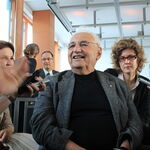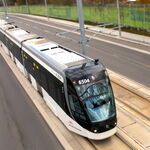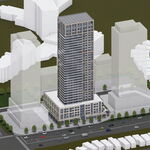constructo
Active Member
Here's an update from the city.
" After assessing a number of options and holding three public drop-in events and other consultation activities, the City recommended the "transform" alternative as the preliminary preferred solution. This included:
· Reconstructing Yonge Street to reduce the number of travel lanes from six to four (between Sheppard Ave. and Hendon Ave./Bishop Ave.)
· Widening sidewalks to create more space for pedestrians
· Enhancing the landscaped median
· Building dedicated cycle tracks
· Adding street trees, plantings, public art, and street furniture throughout
· Integrating public spaces with the street
In February 2017, City Council directed staff to complete a second stage of the study that reviews the possibility of installing cycling facilities on Beecroft Road and/or Doris Avenue, rather than on Yonge Street, and Willowdale Avenue from Bishop Avenue to Steeles Avenue. We are now in Stage 2, and the project team is looking at opportunities on Yonge Street, Beecroft Road and Doris Avenue to enhance mobility and safety for all road users, including cyclists, pedestrians, transit riders, and drivers. We will be holding another drop-in event in the fall to share the findings of this phase and ask for feedback on the preliminary preferred solution. Details about this event will be provided in the near future via email, and notices will be distributed to all residents and businesses in the area.
In the meantime, the project team will be conducting a further assessment of site conditions along Doris Avenue and Beecroft Road by carrying out geotechnical investigations.
" After assessing a number of options and holding three public drop-in events and other consultation activities, the City recommended the "transform" alternative as the preliminary preferred solution. This included:
· Reconstructing Yonge Street to reduce the number of travel lanes from six to four (between Sheppard Ave. and Hendon Ave./Bishop Ave.)
· Widening sidewalks to create more space for pedestrians
· Enhancing the landscaped median
· Building dedicated cycle tracks
· Adding street trees, plantings, public art, and street furniture throughout
· Integrating public spaces with the street
In February 2017, City Council directed staff to complete a second stage of the study that reviews the possibility of installing cycling facilities on Beecroft Road and/or Doris Avenue, rather than on Yonge Street, and Willowdale Avenue from Bishop Avenue to Steeles Avenue. We are now in Stage 2, and the project team is looking at opportunities on Yonge Street, Beecroft Road and Doris Avenue to enhance mobility and safety for all road users, including cyclists, pedestrians, transit riders, and drivers. We will be holding another drop-in event in the fall to share the findings of this phase and ask for feedback on the preliminary preferred solution. Details about this event will be provided in the near future via email, and notices will be distributed to all residents and businesses in the area.
In the meantime, the project team will be conducting a further assessment of site conditions along Doris Avenue and Beecroft Road by carrying out geotechnical investigations.









